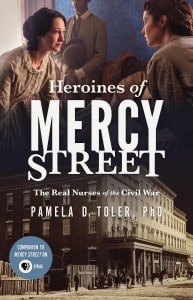
Use the special instructions block at the bottom of the order page to request a signed copy.
The Dragon From Chicago The Untold Story of an American Reporter in Nazi Germany
For fans of unheralded women’s stories, a captivating look at Sigrid Schultz—one of the earliest reporters to warn Americans of the rising threat of the Nazi regime
“No other American correspondent in Berlin knew so much of what was going on behind the scene as did Sigrid Schultz.” — William L. Shirer, author of The Rise and Fall of the Third Reich
Today we face an alarming upsurge in the spread of misinformation and attempts by powerful figures to discredit facts so they can seize control of our political and cultural narratives. These are threats American journalist Sigrid Schultz knew all too well. The Chicago Tribune's Berlin bureau chief and primary foreign correspondent for Central Europe from 1925 to January 1941, Schultz witnessed Hitler’s rise to power and was one of the first reporters—male or female—to warn American readers of the growing dangers of Nazism. She was one of the last to leave Berlin before it was too late.
In The Dragon From Chicago, historian Pamela Toler tells the story of Schultz’s years spent courageously reporting the news from Berlin, from the revolts of 1919 through the Nazi rise to power and Allied air raids over Berlin in 1941. At a time when women reporters rarely wrote front-page stories, Schultz regularly reported the truth about Nazi Germany in the face of censorship and the threat of expulsion, internment, or death.
The Nazis called Schultz “that dragon from Chicago.” One of her fellow correspondents called her “Adolph Hitler’s greatest enemy.” Schultz herself claimed to be “just a reporter.” Her story is a powerful account of one woman standing up for truth in an era marked by the spread of disinformation and propaganda spawned by hate.
“As the Chicago Tribune’s bureau chief in Berlin, Sigrid Schultz interviewed Hitler, broke the story of the Nazi-Soviet pact, and reported firsthand from the death camps. She deserves to be far better known than she is, and in The Dragon from Chicago, Pamela Toler admirably rescues her legacy. Intelligent, perceptive, and thoughtfully written, this is the definitive work on a foreign correspondent who shattered gender stereotypes and fought for the truth against lies and propaganda—a valuable lesson for our time as well as her own.”
—Matthew Goodman, author of Eighty Days: Nellie Bly and Elizabeth Bisland’s History-Making Race Around the World
Sign up for my newsletter for a bi-weekly exploration of how the sausage is made, er history is written. (Plus any news that's fit to print.)

Dear Reader:
In March 2019, a story popped into my news feed: an architectural salvage vendor had discovered seventy-five glass plate photographic negatives in the attic of an old Chicago house. The images dated from the end of the nineteenth century. Most of them were informal pictures of a woman, a child, and a large dog, taken in and around the house itself with a camera normally used for formal studio portraits—not the kind of camera you would use to document daily life.
It was an intriguing historical puzzle to enjoy with my morning tea, so I read on. The little girl in the pictures was named Sigrid Schultz. The pictures were taken by Sigrid’s father—a successful portrait painter who had emigrated from Norway in 1892. Then I hit the punch line: Sigrid grew up to be a groundbreaking foreign correspondent and perhaps the first woman to be a foreign bureau chief for a major newspaper. I was hooked
At the time, I was deep in the process of writing a proposal for a totally different book about another woman whose story deserves to be told. Sigrid elbowed her neatly off my desk. Her story was just too timely to ignore: She worked her way around glass ceilings. She kept the news flowing despite tightening controls on the media. She outwitted Nazis in Germany and stood up against pro-Nazi sympathizers at home. And she dealt with “fake news” on both sides of the Atlantic.
Over the last four years, I watched the rise of Nazi Germany through Sigrid’s eyes, and wondered if I would have been as courageous as she was. I hope I never have to find out. But if the time comes, I’ll ask “What would Sigrid do?”
Yours in history,
Pamela Toler
Other Books















